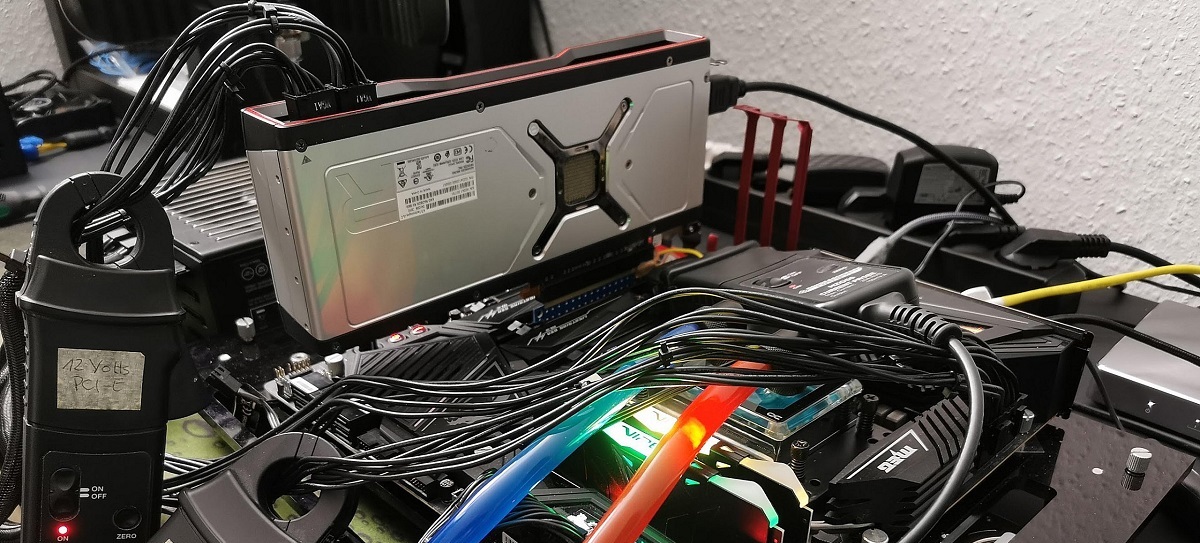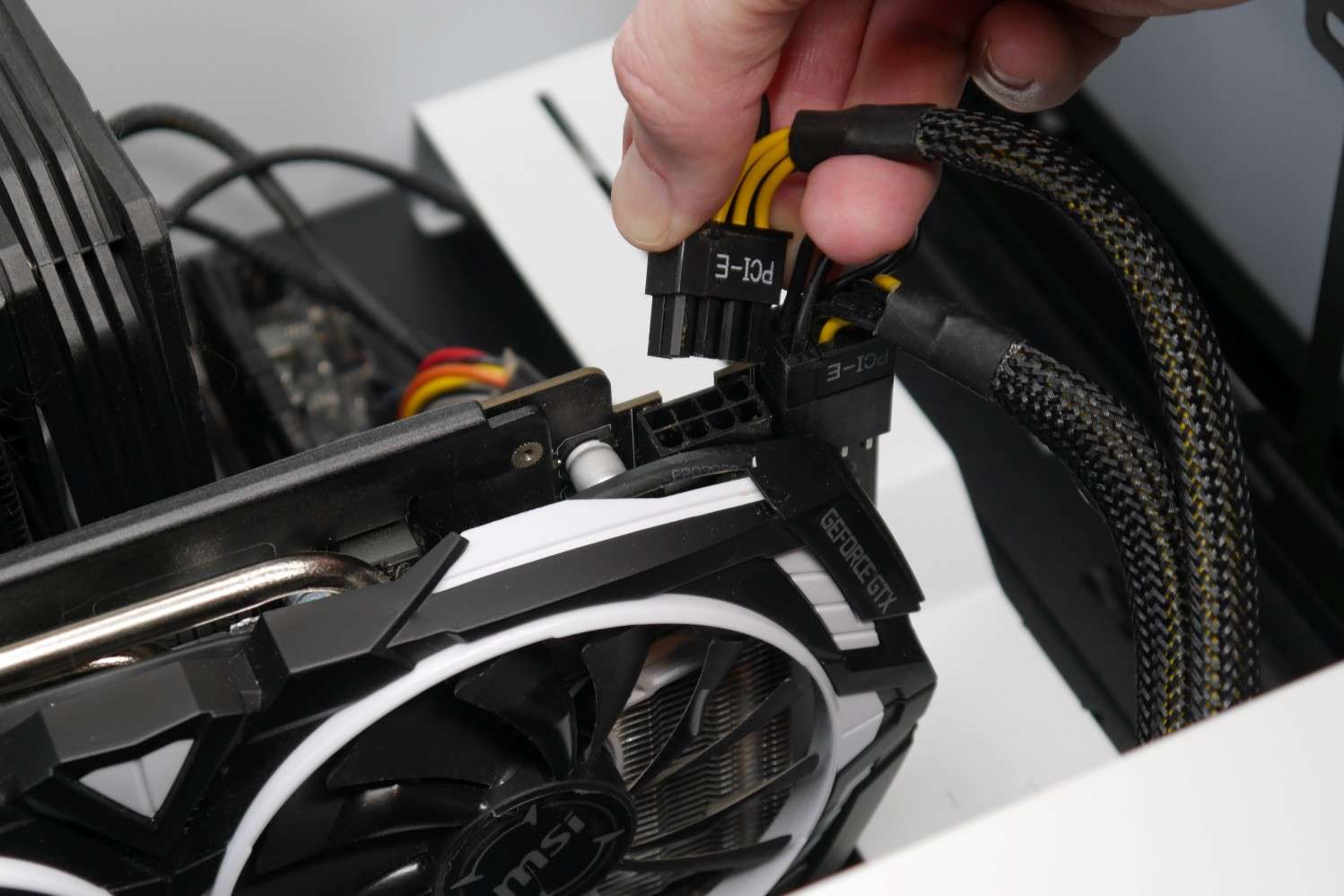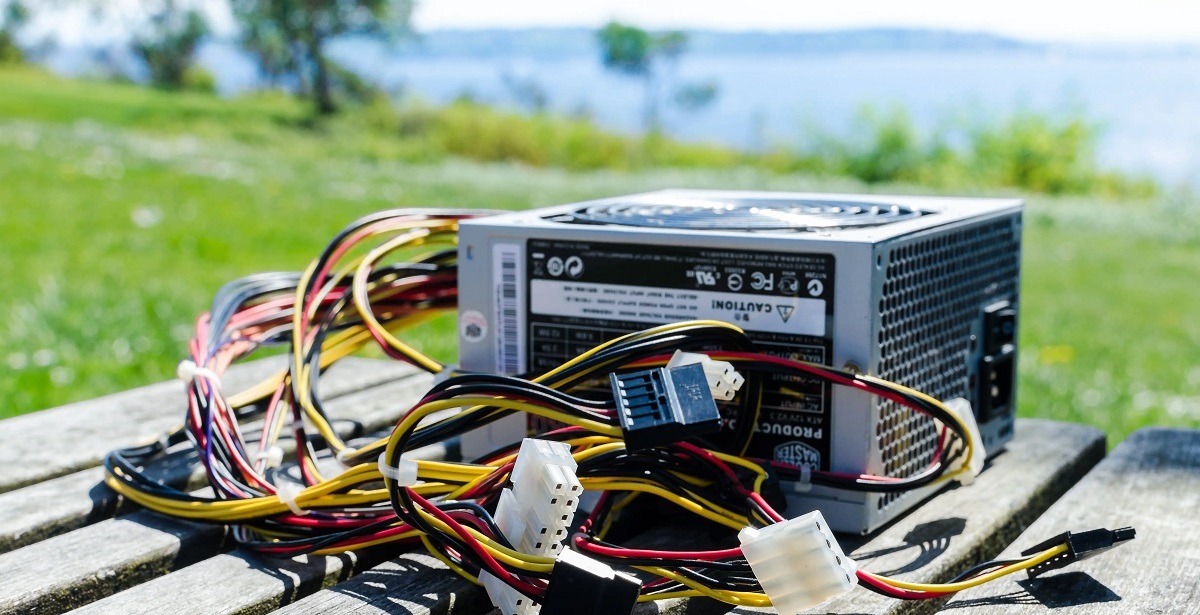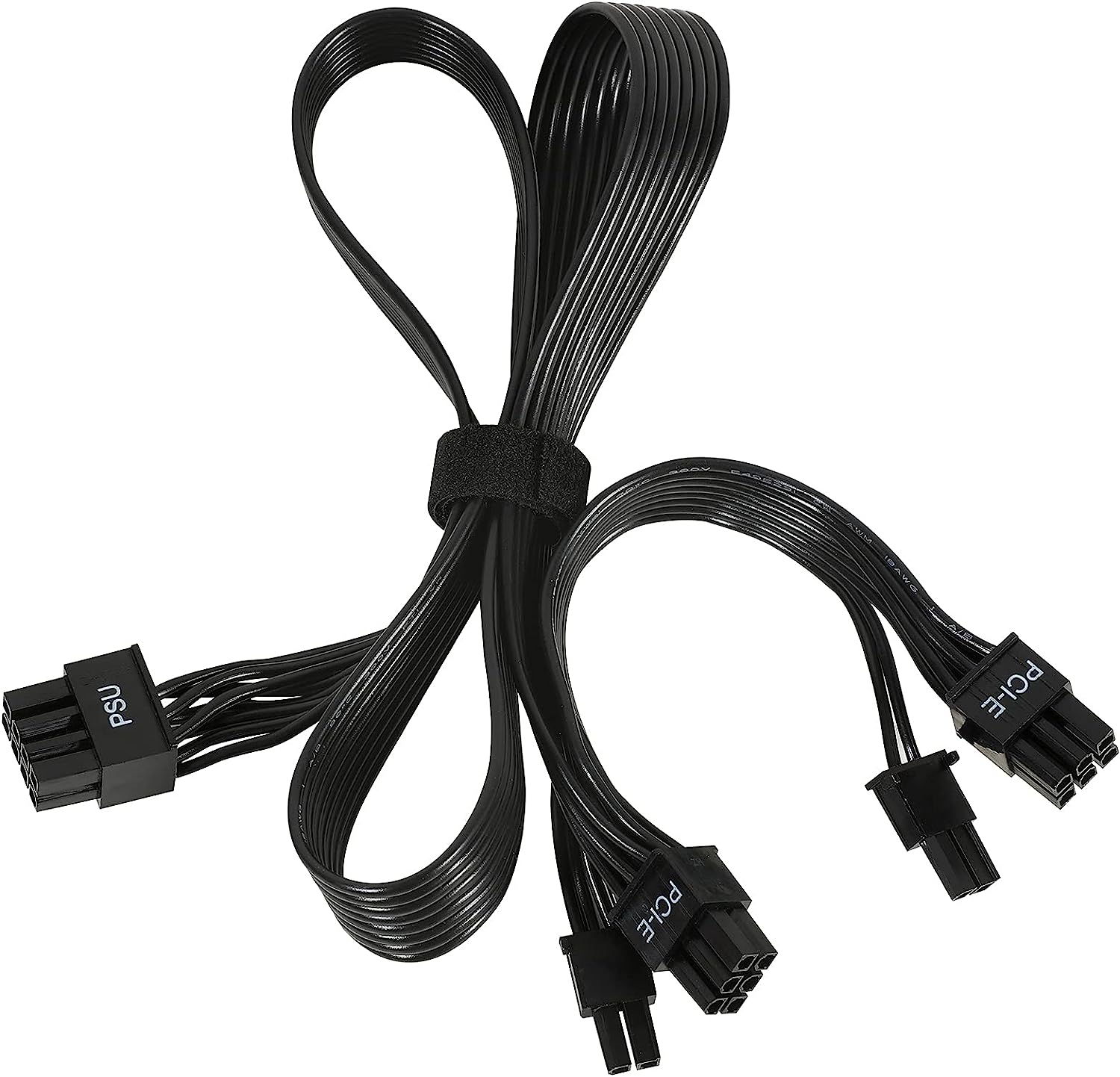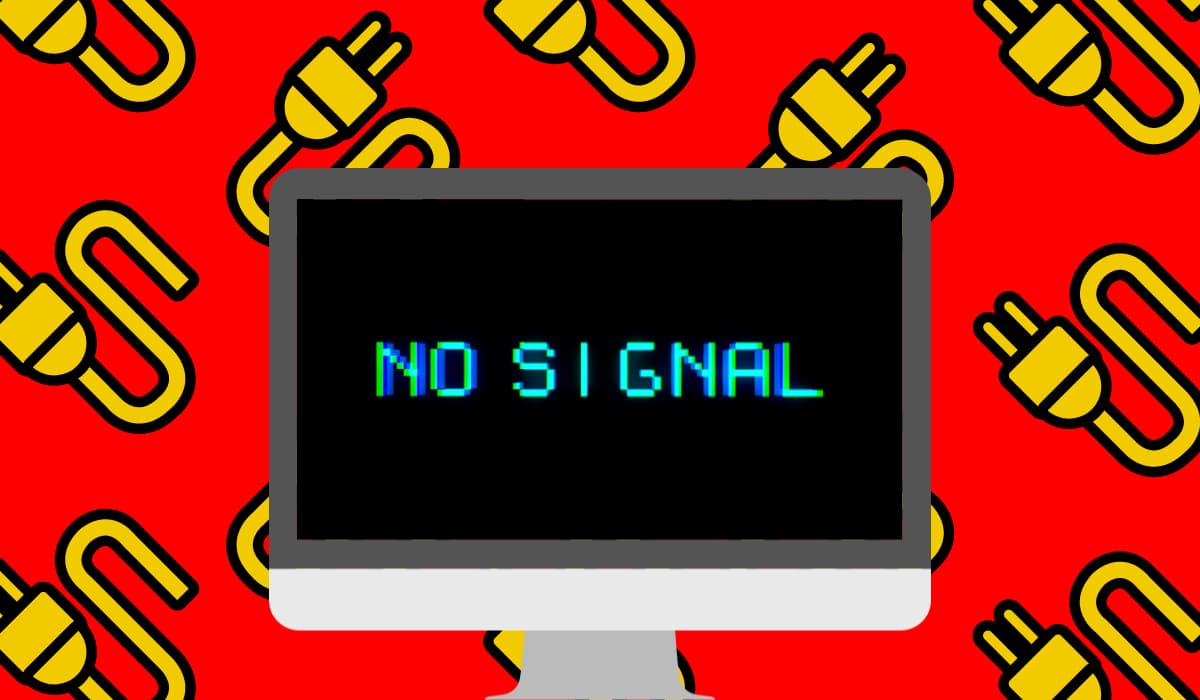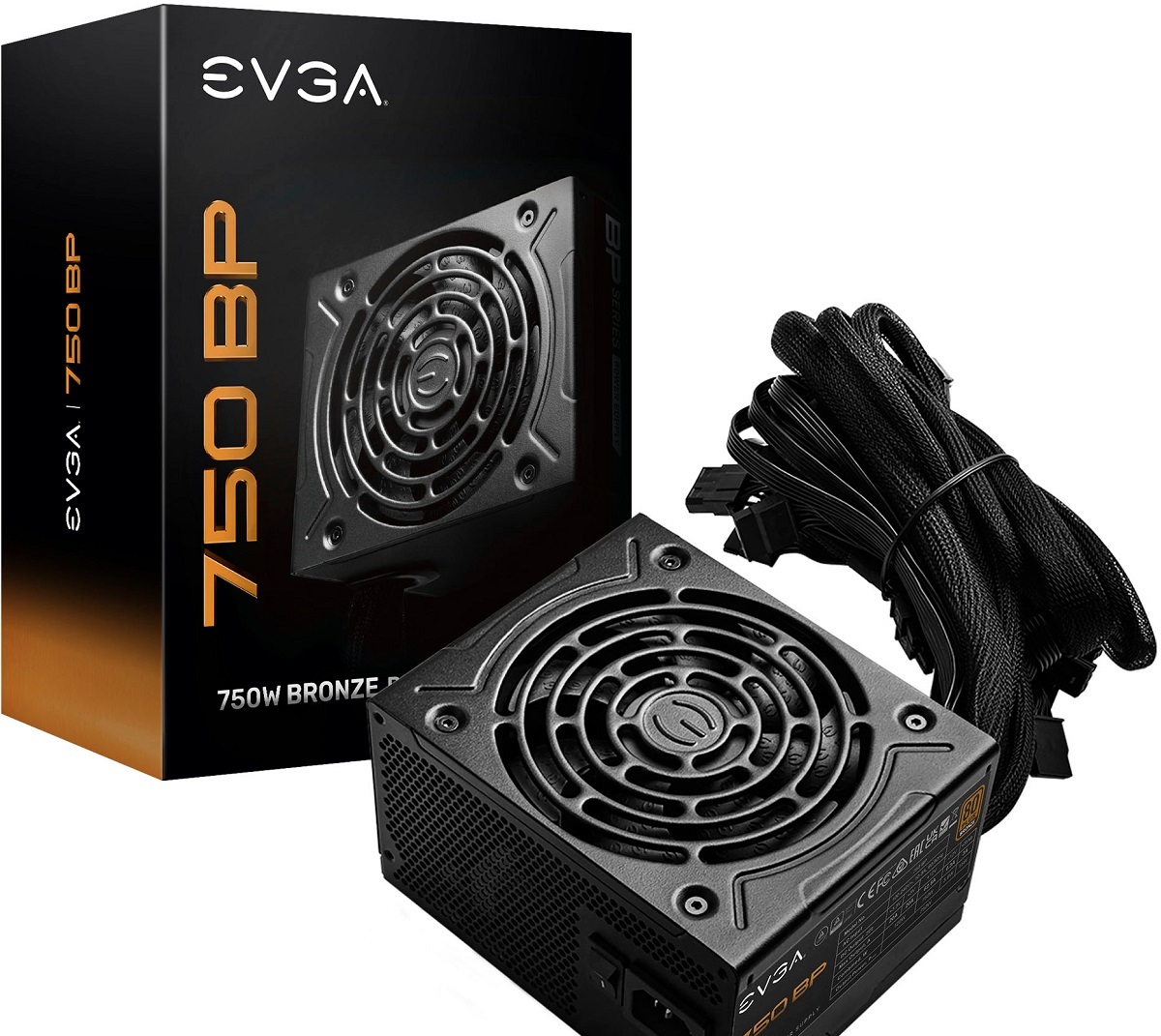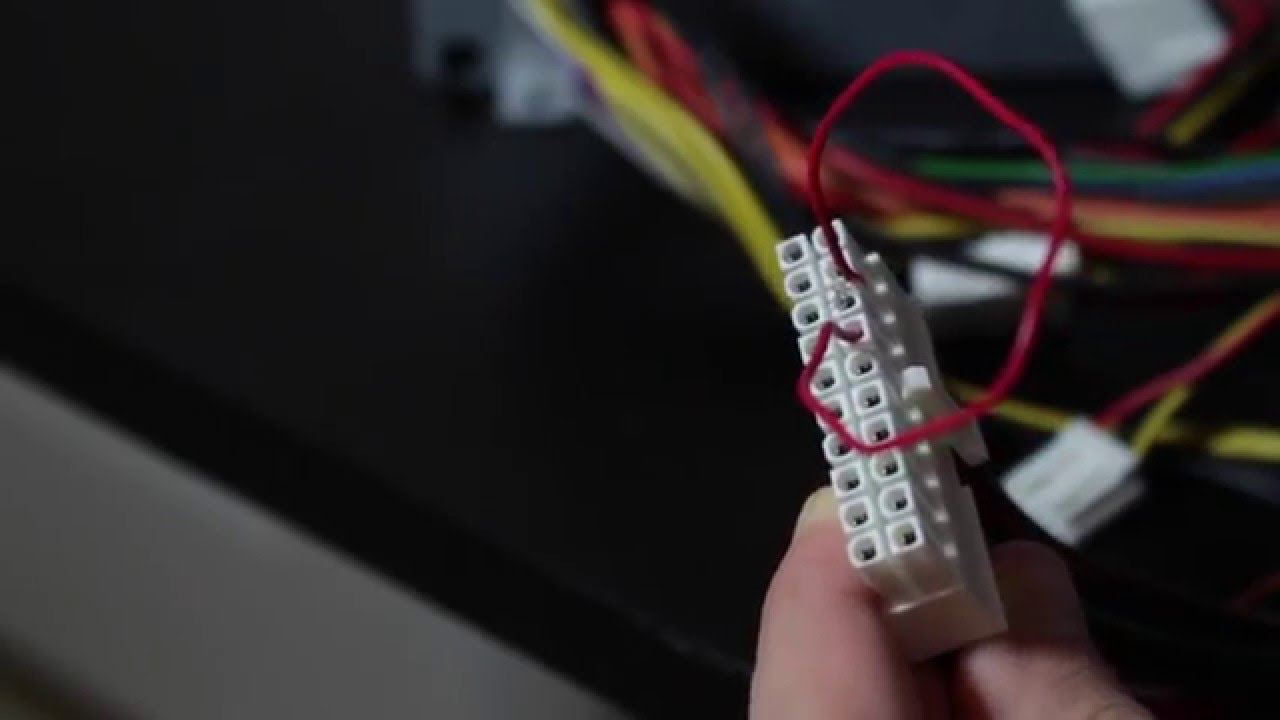Introduction
When building or upgrading a gaming PC, it’s crucial to ensure that all the components are of the highest quality and well-suited for each other. One essential element that often gets overlooked is the power supply unit (PSU) and its compatibility with the graphics processing unit (GPU). The PSU is responsible for supplying the necessary power to all the components in the system, including the GPU, which is the powerhouse behind delivering impressive visuals and smooth gameplay.
Without a strong enough PSU to support the GPU’s power requirements, you may encounter a range of issues, from performance bottlenecks to system instability and even potential damage to your components. Understanding the importance of having a robust PSU for your GPU is essential for anyone looking to achieve optimal performance and longevity of their gaming rig.
In this article, we will delve into the relationship between PSU and GPU, the consequences of not having a strong enough PSU for your GPU, and how to determine if your PSU is inadequate. We will also discuss the steps you can take to upgrade your PSU to ensure it can handle the demands of your GPU.
What is PSU?
A power supply unit (PSU) is a crucial component of a computer that converts the electrical power from the wall outlet into usable power for the various components of the system. It provides a steady and regulated amount of power to ensure the stable operation of the computer. The PSU connects to the motherboard and supplies power to the CPU, GPU, storage devices, and other components.
The PSU is rated by its maximum power capacity, which is typically measured in watts (W). This rating indicates the amount of power the PSU can deliver to the system under normal operating conditions. It’s important to choose a PSU with sufficient capacity to handle the power requirements of all the components in your computer, including the GPU.
PSUs come in different form factors, such as ATX, SFX, and TFX, which correspond to the size and shape of the unit. They also come with various efficiency ratings, such as 80 Plus Bronze, Silver, Gold, and Platinum, indicating how efficiently they convert input power into usable power.
When it comes to GPUs, power consumption can vary significantly based on the model and whether it is intended for gaming, graphic design, or other demanding tasks. High-end gaming GPUs, for example, require more power due to their complex architecture and performance capabilities. It’s crucial to choose a PSU that can handle the power demands of your specific GPU to prevent any issues.
In the next sections, we will explore why having a strong PSU is important for a GPU and the potential issues that can arise if your PSU is not up to the task.
What is GPU?
A graphics processing unit (GPU) is a specialized electronic circuit that is designed to handle and accelerate the rendering of images, videos, and animations. While the CPU (central processing unit) handles general-purpose computing tasks in a computer system, the GPU is dedicated to graphics-intensive tasks, making it an essential component for gaming, 3D modeling, video editing, and other visually demanding applications.
The GPU consists of thousands of cores or processing units that work together to perform complex mathematical calculations required for rendering high-quality graphics. These cores are optimized for parallel processing, allowing them to execute multiple tasks simultaneously. This parallel architecture is what gives GPUs their immense computational power, making them ideal for tasks that involve massive data sets and real-time rendering.
Modern GPUs are equipped with their own dedicated memory called VRAM (Video Random Access Memory), which is separate from the system RAM. This dedicated memory helps to store and access the data needed for rendering images and textures quickly, resulting in improved performance and smoother visual experiences.
GPUs also support various programming interfaces and libraries, such as OpenGL, DirectX, and CUDA, which enable developers to harness the power of GPUs for specialized tasks and optimizations.
With advancements in GPU technology, they have become a crucial component in gaming PCs, enabling gamers to experience realistic graphics, smooth gameplay, and support for high resolutions and frame rates. As game developers push the boundaries of visuals and realism, the demands placed on GPUs continue to increase.
Given the GPU’s importance in delivering impressive graphics and performance, it is essential to ensure that it has proper power support from the PSU to avoid any issues and fully unleash its capabilities. In the following sections, we will discuss why a strong PSU is crucial for a GPU and the potential consequences of using an insufficient PSU.
Why is a Strong PSU Important for a GPU?
A strong power supply unit (PSU) is crucial for a graphics processing unit (GPU) due to the power-hungry nature of modern GPUs and their demanding performance requirements. Here’s why a robust PSU is essential for optimal GPU performance:
Power Delivery: GPUs, especially high-end gaming models, require a substantial amount of power to operate efficiently. They often come with multiple power connectors, such as 6-pin or 8-pin PCIe connectors, to draw power directly from the PSU. A strong PSU ensures that there is a stable and consistent power supply to the GPU, preventing any power fluctuations or voltage drops that could lead to performance issues or system instability.
Overclocking Potential: Overclocking is the process of increasing the clock speed of the GPU to achieve higher performance. However, overclocking also increases power consumption. To successfully overclock a GPU, a strong PSU is necessary to provide the additional power required to run the GPU at higher frequencies without affecting stability. Using an underpowered PSU may limit the potential for overclocking or lead to crashes and instability.
Future Upgradability: A strong PSU not only caters to the power requirements of the current GPU but also allows for future upgrades. If you plan to upgrade your GPU or add more powerful components to your system down the line, a strong PSU will provide the headroom and power capacity to support those upgrades without the need to replace the PSU altogether.
Efficiency and Heat Management: A PSU that is operating near its maximum capacity often runs less efficiently and generates more heat. With a strong PSU that has higher wattage than what the GPU demands, the PSU will operate more efficiently, reducing energy waste and minimizing heat output. This not only benefits the overall power consumption of the system but also contributes to better cooling and temperature management within the case.
Longevity and Reliability: Running a GPU with an underpowered PSU can put excessive strain on both the GPU and the PSU itself. This can lead to premature wear and tear, decreased lifespan of the components, and increased risk of component failure. By using a strong PSU that can handle the power demands of the GPU, you can ensure the longevity and reliability of both the GPU and the PSU.
In the next sections, we will explore the signs that indicate an insufficient PSU for a GPU and the potential consequences of using an underpowered PSU.
Signs of an Insufficient PSU for a GPU
Using an insufficient power supply unit (PSU) for your graphics processing unit (GPU) can result in several noticeable signs and performance issues. It’s important to be aware of these signs to determine if your PSU is not strong enough for your GPU. Here are some common indicators:
1. System Crashes and Instability: One of the most common signs of an underpowered PSU is frequent system crashes, freezes, or sudden reboots. These issues occur when the PSU cannot provide enough power to sustain the GPU’s demands during intensive tasks, causing the system to shut down or become unstable.
2. Graphics Artifacts and Glitches: Insufficient power supply to the GPU can result in graphics artifacts, such as screen tearing, pixelation, flickering, or distorted visuals. These anomalies can occur during gaming, video playback, or other GPU-intensive activities.
3. Reduced Performance and Frame Drops: If your GPU is not receiving enough power, it may struggle to deliver its full performance potential. You may experience significant drops in frame rates, stuttering, or overall reduced performance in games or GPU-accelerated applications.
4. Limited Overclocking Headroom: Overclocking your GPU requires additional power to push its performance beyond its stock settings. With an insufficient PSU, you may encounter limited headroom for overclocking, as the GPU will not receive the necessary power to maintain stability at higher frequencies.
5. Random Shutdowns: When the GPU draws more power than the PSU can handle, it can trigger automatic shutdowns to protect the system from potential damage. If your system turns off abruptly during GPU-intensive tasks, it could be due to a lack of power from the PSU.
6. Unreliable Peripheral Operation: An insufficient PSU can affect the overall stability of the system, causing issues with connected peripheral devices, such as USB devices, external hard drives, or even networking equipment. These devices may fail to function properly or experience intermittent connectivity problems.
7. Audible Coil Whine: Coil whine is a high-pitched noise that can emerge from the GPU or other components in the system. While it can occur for various reasons, an underpowered PSU is one potential cause. The coil whine is an audible indication of the PSU struggling to provide sufficient power to the GPU.
If you notice one or more of these signs, it is advisable to investigate whether your PSU is the culprit. In the next sections, we will discuss the potential performance issues, system stability problems, and potential component damage that can arise from using an underpowered PSU for your GPU.
Performance Issues
Using an underpowered power supply unit (PSU) for your graphics processing unit (GPU) can result in various performance issues that can impact your overall computing experience. Here are some common performance-related problems that can arise:
1. Reduced Frame Rates: When a GPU doesn’t receive enough power, it may struggle to deliver the required performance. This can manifest as lower frame rates in games, resulting in less smooth and responsive gameplay. You may experience noticeable lag, stuttering, or choppy visuals.
2. Limited Graphics Settings: An insufficient PSU may prevent your GPU from performing optimally, restricting your ability to utilize higher graphics settings in games. You may need to lower the resolution, decrease graphical effects, or disable certain features to maintain acceptable performance.
3. Longer Rendering Times: GPU-accelerated tasks, such as video rendering or 3D modeling, can take significantly longer when your PSU is not delivering sufficient power to the GPU. This can greatly impact productivity and workflow, especially for professionals or content creators who rely heavily on GPU performance.
4. Bottlenecked CPU-GPU Performance: In a system where the GPU is not receiving enough power, the CPU may outperform the GPU, causing a performance bottleneck. This imbalance can result in inefficient utilization of resources, limiting the overall potential of your GPU and preventing it from achieving its full capabilities.
5. Inconsistent Multi-Display Support: Adding multiple displays can increase the power demands on the GPU. An underpowered PSU may struggle to deliver sufficient power to drive multiple monitors effectively. This can lead to issues like display flickering, screen tearing, or even failure to detect and display all connected monitors.
6. Longer Loading Times: Insufficient power to the GPU can affect the loading times of games and applications. Since the GPU plays a crucial role in processing and rendering visual assets, inadequate power can slow down asset loading and affect the responsiveness of the system.
7. Decreased VR Performance: Virtual reality (VR) gaming requires a significant amount of GPU power to deliver a smooth and immersive experience. An underpowered PSU can hinder the performance of the GPU, resulting in reduced frame rates, increased latency, or even compatibility issues with certain VR applications.
Addressing these performance issues requires ensuring that your PSU is capable of providing sufficient power to meet the demands of your GPU. In the following sections, we will explore the system stability problems and potential component damage that can occur when using an insufficient PSU for your GPU.
System Stability Problems
Using an underpowered power supply unit (PSU) for your graphics processing unit (GPU) can result in a range of system stability issues that can disrupt your computing experience. Here are some common stability problems that can arise:
1. Random System Crashes: Insufficient power supply to the GPU can lead to sudden system crashes, where your computer shuts down or restarts unexpectedly during tasks that put a heavy load on the GPU, such as gaming or rendering. These crashes occur when the PSU cannot provide enough power to sustain the GPU’s operation, causing the system to shut down as a protective measure.
2. Freezing and Unresponsive Behavior: An underpowered PSU can cause your system to freeze or become unresponsive during GPU-intensive activities. The lack of adequate power can disrupt the flow of data between the GPU and other components, resulting in system lock-ups and an unresponsive user interface.
3. Blue Screen of Death (BSOD) Errors: Insufficient power can trigger hardware conflicts, driver issues, or system instabilities that lead to Blue Screen of Death errors. These errors indicate critical system failures and often require a system restart to recover.
4. Intermittent Display Issues: A weak PSU can cause various display problems, such as screen flickering, display artifacts, or even complete loss of signal. These issues occur when the GPU doesn’t receive enough power to drive the connected display(s) effectively.
5. Slow Boot and System Startup: Inadequate power supply to the GPU can result in longer boot times and sluggish system startup. The GPU may struggle to initialize, causing delays in the overall system initialization process.
6. Unstable Overclocking: Overclocking your GPU to achieve higher performance requires additional power. When using an underpowered PSU, attempting to overclock the GPU can lead to instability, crashes, or even damage to the GPU if the power demands are not met consistently.
7. Inconsistent Peripheral Functionality: An insufficient PSU can affect the stability of peripheral devices connected to your system. USB devices, external hard drives, and other peripherals may experience intermittent connectivity issues or fail to function properly due to power fluctuations caused by the underpowered PSU.
These system stability problems can greatly impact your workflow, gaming experience, and overall system reliability. To avoid these issues, it is crucial to ensure that your PSU can supply sufficient power to your GPU and other system components. In the next section, we will discuss the potential damage that using an underpowered PSU can cause to your GPU and other hardware components.
Potential Damage to Components
Using an underpowered power supply unit (PSU) for your graphics processing unit (GPU) can potentially lead to damage to various hardware components within your system. Here are some potential risks and damage that can occur:
1. GPU Damage: The GPU is one of the most critical and expensive components in a gaming PC. When a GPU doesn’t receive sufficient power, it can cause instability, overheating, and damage to the GPU itself. Over time, the GPU may experience increased wear and tear, reducing its overall lifespan and performance capabilities.
2. Motherboard Damage: An underpowered PSU can put excessive strain on the motherboard, especially the power delivery circuits. Over time, this strain can cause damage to the motherboard, leading to voltage irregularities, system instability, or even complete failure of the motherboard.
3. Data Corruption: Power supply issues can result in data corruption or loss. Sudden power interruptions or fluctuations caused by an underpowered PSU can cause data stored on storage devices to become corrupted or inaccessible. This can lead to permanent data loss and the need for data recovery services.
4. Reduced Lifespan of Components: Operating a system with an underpowered PSU can put extra stress on various components, including the CPU, RAM, and storage devices. Over time, this can reduce the overall lifespan of these components, resulting in premature failure and the need for costly replacements.
5. Stability Issues with Other Devices: In addition to the GPU, an underpowered PSU can impact the stability and functionality of other connected devices. This includes peripherals, such as USB devices, external hard drives, and networking equipment. Insufficient power supply can lead to intermittent connectivity problems, data transfer issues, or outright failure of these devices.
6. Overheating and Thermal Issues: Inadequate power supply can lead to increased heat generation within the system. High temperatures can cause thermal throttling, decreased performance, and potential damage to various components, including the GPU, CPU, and memory modules.
7. Incompatibility with Future Upgrades: If you plan to upgrade your system in the future, using an underpowered PSU can limit your options and compatibility with more power-hungry components. It is important to have a PSU that can adequately support any future upgrades you may consider.
To mitigate these risks and protect your hardware investments, it is essential to use a PSU that can handle the power demands of your GPU and other components. In the next section, we will discuss how to determine if your PSU is not strong enough for your GPU and the steps you can take to upgrade your PSU.
How to Determine if PSU is Not Strong Enough for GPU
Determining whether your power supply unit (PSU) is sufficient for your graphics processing unit (GPU) involves considering several factors and evaluating the power requirements of your GPU. Here are the steps you can take to determine if your PSU is not strong enough for your GPU:
1. Check the GPU Power Requirements: Start by checking the specifications of your GPU to determine its power requirements. Look for the recommended power supply wattage mentioned by the manufacturer. This information can usually be found on the GPU’s official website or in the product documentation.
2. Calculate Power Consumption: Calculate the power consumption of your entire system, taking into account the power needs of other components, such as the CPU, RAM, storage devices, and peripherals. Add up the maximum power draws of each component to get an estimate of the total power consumption.
3. Compare with PSU Capacity: Check the wattage rating of your PSU and compare it with the power consumption calculated in the previous step. The PSU wattage should be equal to or higher than the maximum power draw of your system, including the GPU. If the PSU wattage is significantly lower than the power requirements, you may need to upgrade your PSU.
4. Consider Efficiency and Current Output: Aside from wattage, consider the efficiency rating and current output of your PSU. Higher efficiency ratings, such as 80 Plus Bronze, Silver, Gold, or Platinum, indicate better power conversion and reduced energy waste. In terms of current output, ensure that the PSU has enough amps on the +12V rail to supply the required power for the GPU and other components.
5. Evaluate Stability and Performance: If your system is experiencing frequent crashes, freezes, or graphical glitches, it could be a sign of an underpowered PSU. Monitor the system’s stability and performance during demanding tasks like gaming or rendering. If you notice unstable behavior or performance drops, it may indicate an insufficient PSU.
6. Consider Future Upgrades: If you plan to upgrade your GPU or add more powerful components in the future, take those power requirements into account. Ensure that your PSU has enough headroom to support the power demands of any future upgrades, minimizing the need for frequent PSU replacements.
7. Consult PSU Calculators and Experts: To get a more accurate assessment of your power needs, you can utilize online PSU calculators or seek advice from experts in the field. PSU calculators consider various factors, including the number and type of components, overclocking, and system usage, providing a rough estimate of the PSU wattage required for your setup.
By following these steps, you can determine whether your PSU is not strong enough for your GPU and take appropriate steps to upgrade it if necessary. Having a PSU that can adequately handle the power demands of your GPU contributes to stable system performance, protects your components, and ensures a seamless computing experience.
Upgrading Your PSU
If you have determined that your power supply unit (PSU) is not sufficient for your graphics processing unit (GPU), it’s important to upgrade your PSU to ensure optimal performance, stability, and longevity of your system. Here are the steps to follow when upgrading your PSU:
1. Determine the Power Requirements: Consider the power requirements of your GPU and the total power draw of your system, including other components. Ensure that the new PSU has a wattage rating that meets or exceeds the maximum power draw of your system.
2. Choose a Reliable PSU: Invest in a high-quality PSU from reputable brands that offer reliable performance and come with appropriate safety certifications. Look for PSUs with suitable wattage, efficiency ratings (80 Plus Bronze, Silver, Gold, or Platinum), and sufficient amperage on the +12V rail to handle the power demands of your GPU and other components.
3. Consider Modular or Semi-Modular PSUs: Modular or semi-modular PSUs allow you to connect only the necessary cables, eliminating clutter and improving airflow within your system. This can help with cable management and ensure better cooling for your components.
4. Take Note of Form Factor and Connectors: Pay attention to the form factor of your current PSU and ensure that the new PSU is compatible with your case. Also, check if the new PSU has the required number and types of connectors, such as PCIe connectors, to support your GPU and other components.
5. Plan for Future Upgrades: Consider any future upgrades you might make to your system, such as adding more powerful components or expanding your storage capacity. Choose a PSU with sufficient headroom to accommodate these future upgrades, reducing the need for another PSU upgrade down the line.
6. Ensure Proper Installation: When replacing your PSU, follow the manufacturer’s instructions and guidelines for installation. Ensure that all connections are properly secured and that cables are neatly organized to improve airflow and prevent any potential issues.
7. Test and Monitor: After installation, test your system to ensure that it is running smoothly. Monitor the system’s stability, performance, and temperatures to ensure that the new PSU is providing sufficient power and that there are no issues with overheating or voltage fluctuations.
8. Consider Professional Assistance: If you are not comfortable with installing the new PSU yourself or if you require additional help, consider seeking professional assistance. This ensures that the upgrade is done correctly and minimizes the risk of accidental damage to the components.
By following these steps, you can successfully upgrade your PSU and provide the necessary power support to your GPU and other components. This will result in improved system performance, stability, and reliability, allowing you to enjoy the full potential of your gaming or high-performance PC.
Conclusion
Ensuring that your power supply unit (PSU) is strong enough for your graphics processing unit (GPU) is crucial for optimal performance, stability, and protection of your system. An underpowered PSU can lead to a range of issues, including reduced performance, system instability, and potential damage to components.
By understanding the power requirements of your GPU, calculating the power consumption of your system, and comparing it with the wattage rating of your PSU, you can determine whether an upgrade is necessary. Upgrading to a reliable and sufficient PSU will provide the necessary power support for your GPU and other components, leading to improved performance, stability, and longevity of your system.
Consider factors like efficiency ratings, current output, and future upgradability when selecting a new PSU. Modular or semi-modular PSUs can assist with cable management and airflow. Proper installation and monitoring are essential to ensure the new PSU is functioning correctly and providing adequate power to your components.
Remember to check for any signs of an insufficient PSU, such as system crashes, reduced performance, or instability. Take preventative measures by upgrading your PSU proactively before these issues arise.
By taking the necessary steps to determine if your PSU is not strong enough for your GPU and upgrading accordingly, you can optimize your gaming experience, enhance your system’s performance, and protect your valuable hardware investments.







